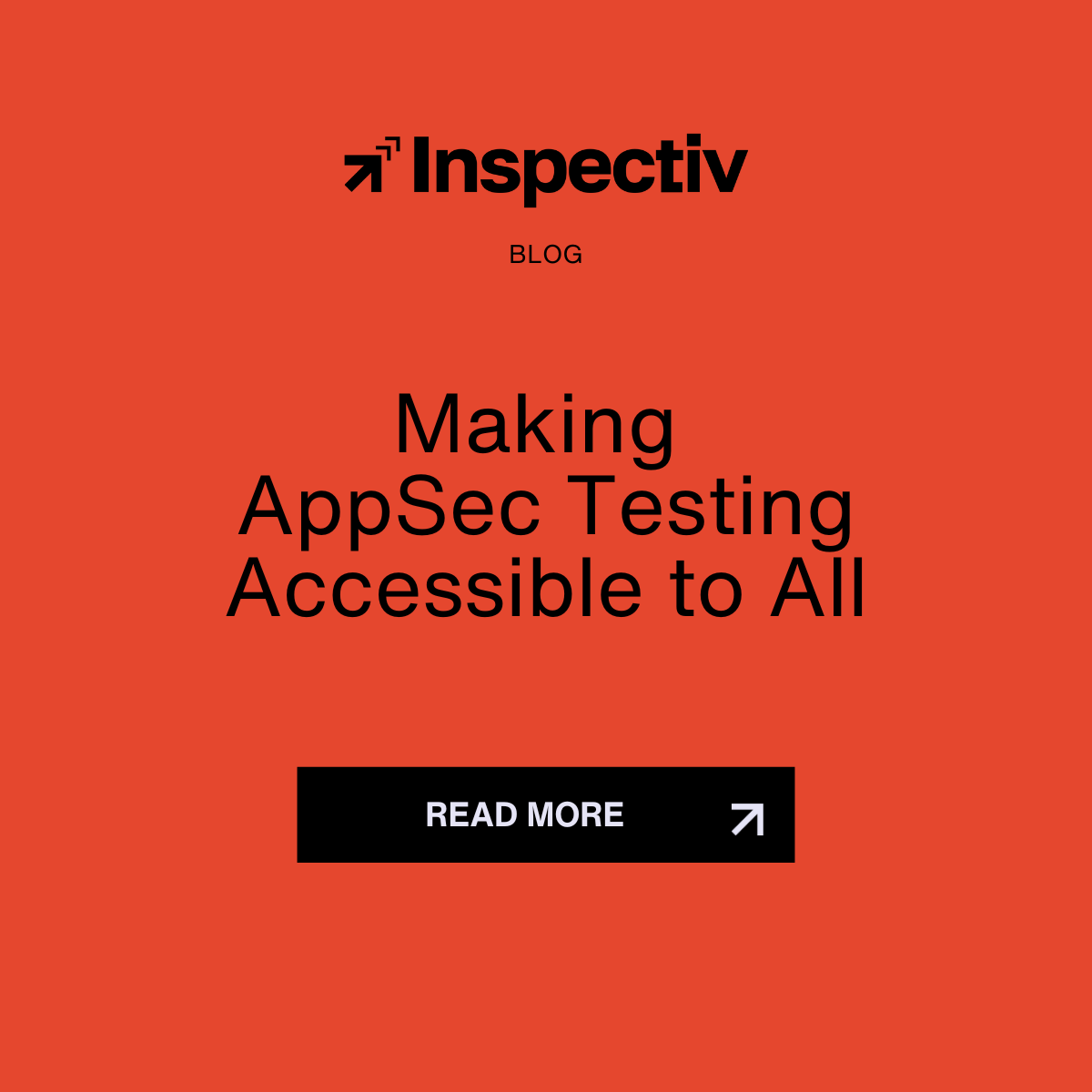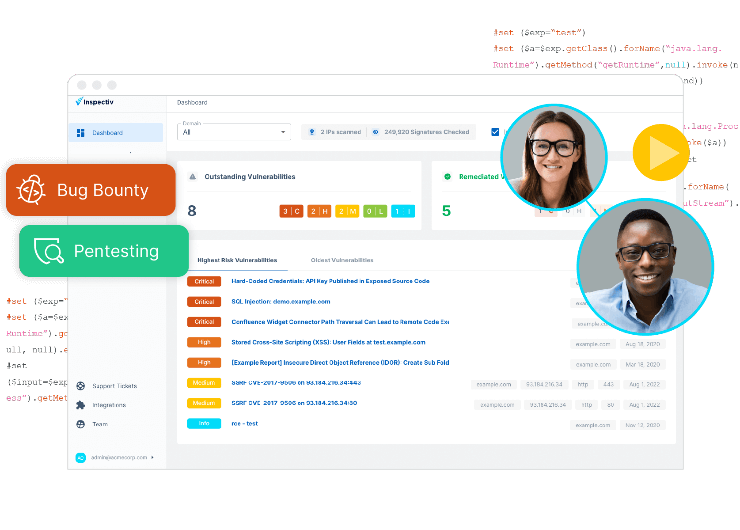Software applications are embedded in nearly every part of daily life from online banking and telehealth to retail and education. But as their use increases, so does the number of security vulnerabilities. Each year, thousands of new weaknesses are discovered, making it critical for organizations to proactively test and secure their applications.
Application Security (AppSec) is the practice of identifying, preventing, and fixing vulnerabilities within software throughout the development lifecycle. It’s not just for security teams—developers, DevOps engineers, and product owners all play a part in ensuring that applications remain secure and compliant as they evolve.
With the right approach to AppSec testing, organizations of all sizes can reduce risk, meet compliance standards, and build safer software from the start.
What is Application Security (AppSec)?
At its core, AppSec is about safeguarding the software your organization builds and uses. This includes processes, tools, and best practices that help identify and remediate vulnerabilities before they become threats.
By focusing on the application layer where most cyberattacks occur, AppSec helps protect sensitive data, reduce business risk, and ensure a more secure user experience. AppSec doesn’t rely on a single tool or one-time test. It’s an ongoing effort that spans the full software development lifecycle (SDLC), including planning, coding, testing, release, and ongoing maintenance.
Why AppSec Testing Matters for Security and Compliance
AppSec testing plays an important role in maintaining security and regulatory compliance. Beyond identifying vulnerabilities, it ensures applications align with frameworks and regulations across industries.
Well-structured AppSec testing can help teams comply with:
- The OWASP Top 10
- ISO 27001 for information security management
- The NIST Cybersecurity Framework
- HIPAA (for healthcare organizations)
- CCPA (California Consumer Privacy Act)
- GDPR (General Data Protection Regulation in the EU)
As security and compliance become increasingly interconnected, application security testing has become a non-negotiable part of doing business. The cost of noncompliance, whether in the form of data breaches or regulatory fines, continues to rise. Teams that integrate testing early and often can avoid these risks while delivering secure, compliant applications faster.
The Challenges of AppSec Implementation
While the need for AppSec testing is clear, implementing it effectively comes with real challenges, especially for organizations with limited resources.
Resource and Budget Constraints
Many teams struggle to keep up with the demands of application security testing. Expensive annual licensing fees, hidden costs, and the need to remediate vulnerabilities as applications evolve can quickly overwhelm security budgets. Add to that a lack of dedicated AppSec expertise, and it becomes easy to fall behind.
Even with the right tools in place, simply managing the volume of testing data and alerts can slow down remediation efforts. Teams often find themselves stuck trying to separate real threats from false positives, delaying the ability to fix what matters most. Inspectiv addresses this challenge with a unified platform that filters out noise and provides actionable insight for remediation.
Explore how to evaluate ROI in bug bounty programs vs. traditional pentesting to see which model fits your team’s needs.
Security Noise and Alert Fatigue
To be effective, security processes must capture detailed logs, validate inputs, encrypt data, secure sessions, and monitor access—often all at once. But these controls can generate a flood of alerts, many of which are low priority. This noise makes it easy to miss critical vulnerabilities.
For small and mid-sized teams, alert fatigue is more than just frustrating. It increases the risk that high-impact issues go unaddressed, leaving the organization vulnerable to attacks.
Adapting to a Fast-Paced Development Environment
Modern development cycles move fast, especially with the rise of continuous integration and continuous delivery (CI/CD). But many AppSec testing programs are still built around periodic reviews and manual processes, creating bottlenecks.
When testing doesn’t keep pace with deployment, vulnerabilities can slip into production undetected. These weaknesses may remain hidden until an attacker finds them, sometimes months or even years later.
To stay secure, teams need solutions that evolve alongside their codebase. This means adopting continuous testing, integrating AppSec tools directly into the CI/CD pipeline, and ensuring that security remains a part of every commit and deployment.
How to Scale and and Integrate AppSec Testing Across Your Organization
Scaling application security testing doesn’t require a large team or complex toolsets. It requires the right strategy, automation, and cross-functional collaboration.
Centralized Visibility with a Unified Platform
When security data is scattered across tools and dashboards, teams waste time switching contexts and risk missing key insights. A unified platform that brings together findings from pentests, bug bounty programs, and vulnerability disclosure in one place makes it easier to act quickly and with confidence.
Centralized dashboards also reduce manual effort and streamline workflows by integrating with existing development tools and CI/CD pipelines. This enables developers and security teams to work from the same set of insights and prioritize remediation based on real-time data.
Inspectiv’s platform is built to help teams do exactly that. By consolidating security testing efforts and automating triage, organizations can scale AppSec testing without increasing headcount.
Build a Culture of Shared Responsibility
Application security works best when it’s not siloed. Successful AppSec programs align developers, DevOps engineers, IT leaders, and security stakeholders around a common goal of reducing risk without slowing innovation.
That alignment starts by making security part of everyday development, not an afterthought or isolated review step. Shift-left testing, supported by continuous feedback loops, gives developers real-time insights into potential risks so they can address them before code moves forward.
This collaborative model reduces friction between teams and increases awareness of secure development practices across your organization. Over time, it helps create a culture where secure code is considered everyone’s responsibility, not just the job of the security team.
Conclusion: Securing Applications with Confidence
Building secure software doesn’t have to be overwhelming. By integrating application security testing into every stage of development, your organization can reduce risk, meet compliance standards, and release more resilient applications.
Whether you're part of a large enterprise or a lean startup, the key is to adopt solutions that scale with your team, streamline remediation, and support continuous feedback. When AppSec testing becomes part of daily workflows and cross-functional collaboration, it strengthens your entire security posture.
Inspectiv makes this process easier by combining vulnerability disclosure, pentesting, and bug bounty programs into a single platform that helps you catch and fix issues faster without overloading your team.
Ready to scale your AppSec testing and simplify remediation? Request a demo to see how Inspectiv can help you secure your applications with confidence.









